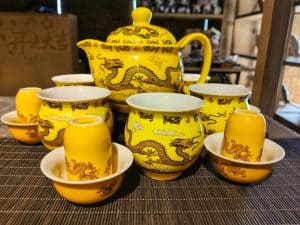Heritage Handbook: Traditional Dress Today
Welcome to the ultimate guide to traditional dress today! As our world becomes increasingly globalized, it’s important to preserve and celebrate the cultural heritage of different regions and communities. Traditional dress is a key aspect of this heritage, reflecting the unique identity and history of a particular group. In this Heritage Handbook, we will delve into the significance of traditional dress in our modern world and explore its evolution and importance today. From stunning craftsmanship to cultural symbolism, there’s much to discover about traditional dress. So let’s dive in and explore the fascinating world of Heritage Handbook: Traditional Dress Today.
The Evolution of Traditional Dress
Traditional dress has been a part of human history for centuries, with its origin dating back to ancient civilizations. It was primarily used as a functional garment, providing protection from harsh natural elements like the sun, wind, and rain. Over the years, traditional dress has evolved to reflect changes in culture, beliefs, and lifestyle.
Influenced by their surroundings, communities started incorporating unique materials, patterns, and designs into their traditional dress. For instance, the Maasai tribe in Africa is known for their vibrant and colorful clothing made from traditional beading techniques and shuka cloth. In contrast, the Inuit people in the Arctic regions use animal skins and furs for warmth and insulation.
Traditional dress has also been influenced by outside factors such as colonization and globalization. With the introduction of new materials and techniques, traditional dress has evolved and adapted to modern trends while still retaining its cultural significance.
The Importance of Traditional Dress Today
Traditional dress is not just a means of clothing; it’s a symbol of identity and pride. It serves as a visual representation of a community’s culture, values, and beliefs. By wearing traditional dress, individuals can express their sense of belonging and connection to their heritage.
Moreover, traditional dress plays a vital role in preserving cultural heritage. It’s a physical manifestation of traditions and customs that have been passed down through generations. As the world becomes more homogenized, traditional dress serves as a reminder of the diversity and richness of our world.
Additionally, traditional dress is a source of economic empowerment for many communities. It provides jobs and income for artisans and craftsmen who create these beautiful pieces. By supporting and promoting traditional dress, we can help preserve traditional crafts and sustain the livelihood of these communities.
The Role of Traditional Dress in Modern Fashion
In recent years, traditional dress has gained recognition in the world of fashion. Designers and fashion houses have started incorporating traditional elements into their collections, giving traditional dress a modern and trendy twist. This has not only made traditional dress more accessible but also helped to keep it relevant and alive in today’s fast-paced world.
Furthermore, the rise of social media has given a platform for traditional dress to gain global exposure. People from different backgrounds are now able to appreciate and even incorporate elements of traditional dress into their personal style, further promoting cultural exchange and unity.
The Future of Traditional Dress
With globalization and modernization, there are concerns about the future of traditional dress. Will it continue to evolve and adapt to changing trends? Or will it eventually fade away?
The answer lies in our hands. As individuals, we can play a part in preserving and promoting traditional dress by learning about its significance and supporting traditional crafts. Governments and organizations also have a responsibility to protect and promote traditional dress as a part of their cultural heritage programs.
Traditional dress will continue to evolve with changing times, but its cultural significance will always remain strong. It’s up to us to ensure that this unique aspect of our heritage lives on for generations to come.
In Conclusion
Traditional dress is more than just a piece of clothing; it’s a symbol of identity, pride, and heritage. From its humble origins to its modern-day evolution, traditional dress has retained its cultural significance and continues to play a vital role in our world today. Let’s appreciate and celebrate the beauty and uniqueness of traditional dress, and ensure that it remains an integral part of our cultural heritage for years to come. Thank you for joining us in this journey through Heritage Handbook: Traditional Dress Today.









